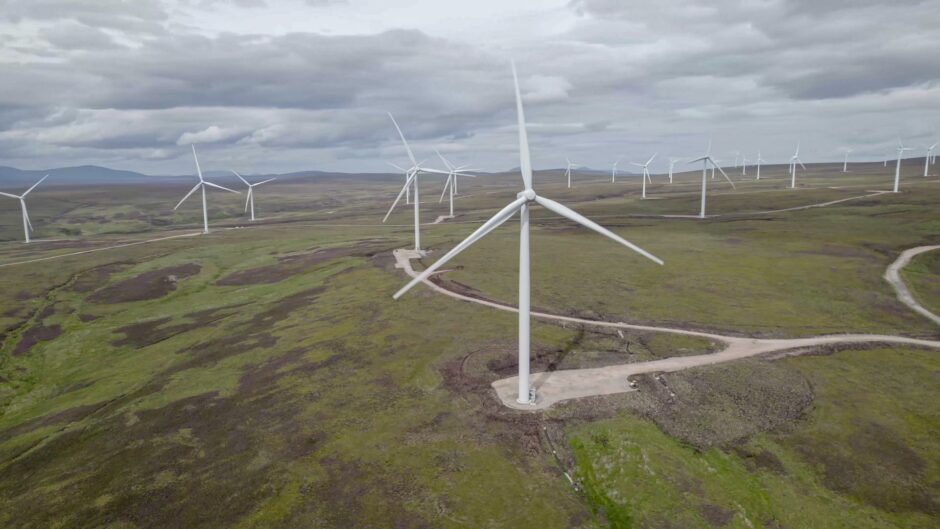
Over the past few months, Europe has radically accelerated its energy ambitions, placing hydrogen at the centre.
Timelines have been moved forwards, and the REPowerEU strategy has staked Europe’s energy future on the viability of hydrogen as an energy carrier.
Last week, the European Hydrogen Backbone Initiative, a group of 31 energy infrastructure operators, seemed to confirm this was a step in the right direction when it claimed that it had identified enough renewable hydrogen supply to come online by 2030 and meet the EU’s new production goals.
While there are reasons to believe the EU can meet these goals, there are significant challenges to overcome that policymakers have not yet addressed.
Hydrogen has gained immense popularity over the last decade as businesses and governments work to find a workable renewable policy. Inefficiency is seen as a price to pay in exchange for hydrogen’s potential benefits.
Hydrogen can store energy loss free over seasons and transporting hydrogen in bulk is 10-15 times cheaper than electricity. It could help decarbonise sectors that have traditionally struggled to reduce emissions.
Hydrogen technology is also versatile, many kinds of fuels can be used to extract it, and it in turn can be transformed into electricity, ammonia or into a fuel itself.
From Germany’s new hydrogen contract with the United Arab Emirates to E.ON’s agreement with Australia’s FFI, there have been a spate of deals and pledges around hydrogen in the wake of the EU’s energy supply crisis. The EU’s efforts to economically isolate Russia have forced it into rapidly sourcing alternate supplies of energy, and this has led to a significantly shortened timeline for its member states’ transition to renewable fuels.
Increasingly, Europe is recognising that its plans for the energy transition and the need to boost energy security may be one and the same.
Falling short
To date, the EU’s efforts to support the development of renewables, particularly hydrogen, have fallen short of the need to make a hydrogen powered Europe a reality. There has been a complete mismatch between demand for the technology and action.
In early March, only two weeks after Russia’s invasion of Ukraine, the EU presented its REPowerEU strategy, which alongside plans for reducing dependence on Russian fossil fuels also contained a Hydrogen Accelerator.
The Accelerator quadrupled Europe’s hydrogen demand to 20 million tonnes by 2030,which was 5.6 million tonnes, only a few months ago. Half of that, or 10 million tonnes, is projected to be imported.
A high-level analysis estimates that some 300-400 GW electrolyser capacity will be needed if all the hydrogen produced were to be green, which is the main strategic direction of the EU. All this production would need to be ready by 2030, which in industry terms is effectively tomorrow.
The global demand for hydrogen production would then be multiples of that.
To put these goals into practice, Europe will need to produce hundreds of GWs of electrolysers. Earlier this year Siemens announced plans for a 2,000 square metre electrolyser factory in Berlin, a so-called Gigafactory.
To put that into perspective: the Tesla factory in Brandenburg next to Berlin is 4.3 square km, or more than 2,000 times larger.
Siemens is planning to produce up to 1 GW per year, and similar scale factories are currently being built by ThyssenKrupp, NEL, ITM, Sunfire, John Cockerill and other European manufacturers. Taken together, existing capacities would be completely insufficient for hitting European targets.
Earlier this month the EU’s Commissioner for Internal Market signed a Joint Declaration with 20 industry CEOs to increase Europe’s electrolysers production capacity to 17.5 GW per year. While this was a welcome step, it would still fall some way in meeting the declared demand of hundreds of GWs of electrolyser capacity. Much more is needed.
Mind the gap
There is a fundamental capacity gap between the ambitions of politicians and the existing and planned capacity to produce hydrogen. The industry is going to need to act fast, and with concerted support from government partners, if it’s going to overcome this.
Later this year, several of the leading hydrogen producers will attend one of the biggest industry conferences in Europe, Gastech Hydrogen, in Milan, which is also expected to draw in a host of EU politicians.
This will be a prime opportunity for the industry to lay out the key issues starkly to the EU in its own backyard and confront them with what the sector needs to make the REPowerEU a reality.
While there are reasons to be bullish around hydrogen’s potential, this does not mean we should ignore the clear obstacles in the way of hydrogen’s development.
To reach 2030 targets there needs to be rapid change in the conditions for hydrogen production, without them the idea of a hydrogen powered Europe may not be dumb, but it won’t be realistic either.
Frank Wouters is President of the Long Duration Energy Storage Council and Chairman of the MENA Hydrogen Alliance. He is also Senior Vice President New Energy at Reliance Industries, Board Director of Gore Street Capital (UK) and Board Director of Vast Solar (Australia)
Recommended for you

 © Supplied by Frank Wouters
© Supplied by Frank Wouters